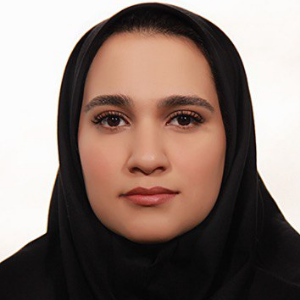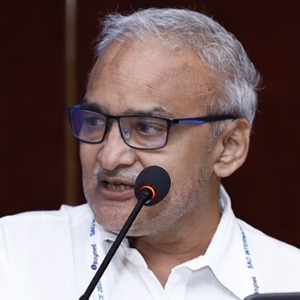Anna Maria Bassi, University of Genoa, Italy
Several neurodegenerative diseases, including glaucoma, diabetic retinopathy, and age-related macular degeneration all involve retinal cell death. Neuroprotection is an important goal for the prevention and treatment of neurodegeneration. To this end, having reliable experimental [....] » Read More








































Title : Submacular haemorrhage due to wet age-related macular degeneration: What to do?
Tim Jackson, King’s College London, United Kingdom
Aim: To consider the presentation, management options, and randomised controlled trials investigating submacular haemorrhage (SMH) secondary to neovascular age-related macular degeneration (AMD), with a focus on the use of tissue plasminogen activator (TPA) and pneumatic dis [....] » Read More
Title : Monovision cataract surgery made simple
Shadrokh Nabili, University Hospitals of Morecambe Bay NHS Foundation Trust, United Kingdom
Background: The demand for presbyopia-correcting IOLs (intraocular lenses) at the time of cataract surgery is increasing. An alternative to implanting these lenses is monovision cataract surgery. Although it has limitations, it may be offered to patients as an option. This i [....] » Read More
Title : Mast cells in infllammation: Role of cytokines
Pio Conti, University of Chieti, Italy
Mast cells (MCs) originate from CD34+/CD117+/CD13+ pluripotent hematopoietic stem cells and they express the c-Kit receptor (c-Kit-R) which regulates their proliferation and sustains their survival, differentiation, and maturation. MCs are immune tissue cells derived from bone ma [....] » Read More
Title : Why was Leonhard Euler blind?
John David Bullock, Wright State University, United States
Leonhard Euler was one of the most eminent mathematicians of all time. In 1735, he developed right periocular swelling, partial loss of vision, and the onset of lifelong recurrent fevers from a heretofore-unknown affliction. Three years later, he developed an infection in the rig [....] » Read More
Title : Results of a photobiomodulation treatment in patients with macular degeneration age-related (ADM) with a new low-fluence, multifrequency wearable device: Positive medium-term effects (6 months) of visual function
Pierdomenico D Andrea, University “G. D’Annun, Italy
Introduction: In our previous study, we demonstrated the efficacy and short-term safety of low-fluence photobiomodulation (LF-PBM) for atrophic macular degeneration (AMD) using a newly developed wearable multifrequency device. In this study, we report the six-month follow-up resu [....] » Read More
Title : Visual snow syndrome: Unraveling a mysterious visual disorder
Oliwia Kamieniecka, Medical Univeristy of Warsaw, Poland
Visual Snow Syndrome (VSS) is a neurological disorder characterized by persistent visual disturbances, most notably a continuous “visual snow” or static across the visual field, which can profoundly impact quality of life. In addition to the primary symptom of visual [....] » Read More
Title : GB10, a best-in-class antibody fusion protein targeting VEGF/Ang-2, exhibits promising therapeutic efficacy for neovascular eye diseases
Suofu Qin, Kexing Biopharm Co., Ltd., China
In clinical practice, anti-vascular endothelial growth factor (VEGF) therapies have been successfully applied to patients with neovascular eye diseases. However, unmet clinical needs have not yet been fully addressed, as about 20% of patients do not response to anti-VEGF mo [....] » Read More
Title : Roth spots serving as a clue to underlying acute myeloid leukemia
P Muralidhar, AIIMS Mangalagiri, India
Acute myeloid leukemia is one of the causes of Roth spots. We report here a female patient in her early thirties, of Asian origin, presenting to our ophthalmology outpatient clinic with complaints of decreased visual acuity in the Right eye along with generalized weakness, palpit [....] » Read More
Title : The effectiveness of surgical treatment of terson syndrome
Anna Rusanovskaia, State Budgetary Healthcare Institution, Russian Federation
Terson's syndrome (hemorrhagic oculocerebral syndrome) is a vitreal, preretinal, subgialoid or subretinal hemorrhage associated with acute subarachnoid, intracerebral hemorrhage, or traumatic brain injury. The clinical picture is characterized by a sharp mono or bilateral los [....] » Read More
Title : Optimization of the ocular surface using Intense Pulsed Light (IPL) therapy before cataract surgery
Dmytro Zhaboiedov, Bogomolets National Medical University, Ukraine
Introduction: Dry eye disease (DED) is a prevalent condition among patients undergoing cataract surgery, significantly impacting preoperative measurements and postoperative recovery. One of the primary contributors to DED is meibomian gland dysfunction (MGD), which leads to tear [....] » Read More
Title : Surgical treatment of chronic macular hole by hydraulic mobilization of the central parts of the retina
Anna Rusanovskaia, State Budgetary Healthcare Institution, Russian Federation
Objective: to evaluate the safety and effectiveness of the technique of hydraulic mobilization of the central parts of the retina in the surgical treatment of chronic macular ruptures. Materials and methods: 11 patients (11 eyes) with chronic macular rupture were under obse [....] » Read More
Title : Daily artificial tears as a preventive measure for dry eye syndrome in medical students: A systematic review and meta-analysis
Nodira Makhmudova, Akfa Medline University Hospital, Uzbekistan
Purpose: To determine the efficacy of the daily artificial tears usage as a dry eye syndrome prophylaxis among medical students, who are at increased risk due to lifestyle factors. Methods: We performed a systematic review and meta-analysis following the Preferred Reporting Item [....] » Read More
Title : Atopy and its role in the development and progression of keratoconus: A systematic review and meta-analysis
Mokhiryam Aliyeva, Akfa Medline University Hospital, Uzbekistan
Purpose:Progressive condition which is characterized by corneal thinning,distorted astigmatism and impaired vision is called keratoconus (KC). Development of a disease is often associated with genetic predisposition and environmental factors. This study seeks to investigate the r [....] » Read More
Title : Anti-inflammatory properties of omega-3 fatty acids and its clinical significance in the treatment of dry eye syndrome
Jamshid Mamatov, Akfa Medline University Hospital, Uzbekistan
Purpose: to evaluate the effectiveness of nutritional omega-3 fatty acid supplementation in the management of dry eye disease (DED). We focused on the anti-inflammatory properties of omega-3 and its impact on the symptoms and signs of DED, especially in patients with meibom [....] » Read More
Title : Effect of combination of anti-VEGF and corticosteroid use in two patients with early-onset central retinal vein occlusion
Javokhirbek Ravshanbekov, Akfa Medline University Hospital, Uzbekistan
Purpose: Central Retinal Vein Occlusion (CRVO) is an uncommon condition in young adults that can lead to severe visual impairment if untreated. This study evaluates the treatment outcomes of two young male patients with CRVO who underwent a combination of intravitreal anti-V [....] » Read More
Title : Case report of lyme disease associated proliferative vitreoretinopathy, challenges in diagnostic and treatment
Lesia Parkhomchuk, Center of Clinical Ophthalmology, Ukraine
A woman 30 y. with complains of gradual bilateral visual loss and headache during 6 months. Vis OD=0.25, Vis OS=0.04. Anterior eye segment without changes, IOP normal. On the eye fundus – massive proliferative changes and partial hemophthalmia. Serology negative for Tubercu [....] » Read More
Title : Hyperbaric oxygen therapy for crao in a pediatric patient: A case of sudden unilateral visual loss Post-DSA of an arteriovenous malformation
Carmen N Plaza Mejias, UPR-SOM, Puerto Rico
Central retinal artery occlusion (CRAO) is an ophthalmic emergency that typically presents as a sudden, profound, and painless monocular visual loss, potentially leading to permanent blindness. While rare in the pediatric population, the etiology in children can differ from that [....] » Read More
Title : Protein and mineral malnutrition in military personnel and its association with dry eye syndrome
Jamshid Mamatov, Akfa Medline University Hospital, Uzbekistan
Military personnel are frequently faced with environmental challenges and operational demands.These barriers increase vulnerability to nutrient deficiencies including minerals and proteins imbalance. Such nutrient deprivation can make a disadvantageous impact on ocular wellness,e [....] » Read More
Title : Inhibitory effects of novel artemisinin derivative on laser-induced choroidal neovascularization via regulating AKT and ERK1/2 pathways
Yandong Wang, Sun Yat-sen University, China
Choroidal neovascularization (CNV) is a major cause of blindness in ocular fundus disease. The major defects of the current first-line anti-VEGF drugs for fundus disease are the high administration frequency and ocular complications. Meanwhile?about 40% of fundus disease patients [....] » Read More